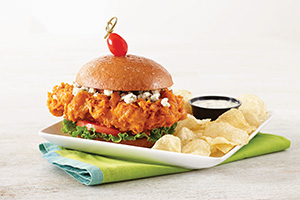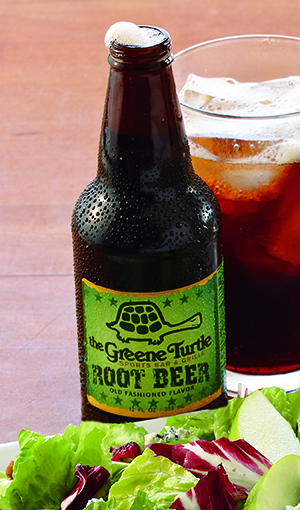The Greene Turtle was a typical sports bar in 2012, with a menu of mostly pub food meant to complement its drinks, when the chain decided to overhaul its menu.
That year, the Hanover, Md.-based concept introduced more freshly prepared items and plenty of healthful fare. The result has been dramatic: A broader customer demographic that made it easier to generate sales.
Same-store sales have grown in each of the past two years, and now 51 percent of the chain’s customers are women. Food, once a complement to its drinks, was now the main menu, rising from 50 percent of sales in 2007 to 65 percent today.
“We concentrated on upping our food and targeting a different customer demographic,” Greene Turtle CEO Bob Barry told Nation’s Restaurant News. “We put a lot of effort back into our food. It’s fresher, healthier. We still serve pub food, but we’ve expanded on the menu with more fresh, local, handmade items.”

The new menu mix generated higher sales, and that, along with unit growth, led to the 41-unit chain’s acquisition, announced last week, by the New York private-equity group Stone-Goff Partners, for an undisclosed sum.
Sports bars have performed well of late, but a 50-50 food-to-beverage sales mix made it more difficult for franchisees to generate consistent sales.
“It’s hard to attract families and females,” Barry said. “There’s a wide range of customers we have no access to if it’s bar focused.”
The company is still a sports bar, and certain sporting events remain vital to the chain’s sales. But, Barry said, “It’s much easier now” to generate more consistent sales with a broader demographic.
“We’re taking our food serious,” he said. “We’re very competitive in casual restaurants. We feel we can compete against anybody in that market.”
“We’ve been in it for eight years,” said Barry, who arrived at the chain in 2007. “We felt it was a good time to take it to the next level of private equity.”
Existing Greene Turtle management will remain with the company, and not much will change about the company’s direction, Barry said. But he hopes that the new investors will have the ability to fund growth as needed in future years.
“It gives us the opportunity to get capital when it’s needed for expansion,” Barry said, adding that if the company sees a market where it wants to be, it would be able to request those funds for growth.

The Greene Turtle plans to build six to eight units a year for the next three years, with franchisees opening 80 percent of locations. The chain’s restaurants are located primarily in the Mid-Atlantic region, but it hopes to break into new markets in the coming years, including New Jersey and the Carolinas.
The Greene Turtle will open company restaurants in new markets where the chain isn’t known as well. By seeding a market, such units can convince operators that the concept will work well in those areas.
“It gives us an opportunity to show a franchise group we can bring the brand to a market,” Barry said. “It takes risk factors away from the franchisee thinking about developing that market.”
Barry said The Greene Turtle has attracted more sophisticated operators in recent years in part because of its seed strategy, but also because of its new, broader menu. Plus, he said, the chain is well positioned to take advantage of what he sees as a comeback in the casual-dining segment.
“I think it’s coming back,” Barry said. “People are starting to realize there’s a place for it. It’s not a quick grab-and-go. People can spend some time, relax and enjoy a meal.”
Contact Jonathan Maze at [email protected].
Follow him on Twitter: @jonathanmaze

